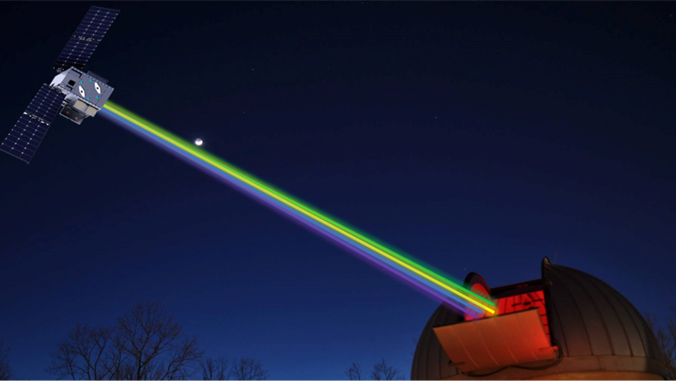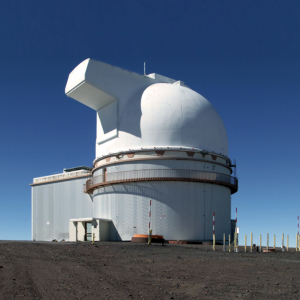
A University of Hawaiʻi telescope on Maunakea will play a key role in a newly approved $19.5 million NASA space mission that will put an artificial “star” in orbit around the Earth. The star will be a satellite that scientists will use to precisely calibrate telescopes and more accurately measure the brightness of objects ranging from nearby stars to distant explosions of supernovae in far-off galaxies. As part of the NASA Landolt Space Mission, astronomers at the UH Institute for Astronomy (IfA) will utilize observations to generate fresh star brightness catalogs.
“It will improve our ability to more precisely measure the properties of stars in our galaxy, and by extension the planets that orbit them,” said Daniel Huber, associate professor at IfA and a science team member of the Landolt mission. “The measurements by the NASA Landolt Mission will enable tremendous progress for a wide range of ground-based astronomical observations.”

Prime observing conditions on Maunakea where the UH88 telescope is located make the IfA-operated observatory an ideal facility to support NASA’s Landolt mission, according to UH astronomers. The NASA mission is named after the late astronomer Arlo Landolt, who compiled extensive catalogs of stellar brightness from the 1970s and into the 1990s. The Landolt Space Mission will send a satellite into orbit in 2029 that will emit photons at a known rate and be observed alongside real stars to create accurate catalogs of stellar brightness. To achieve this, the satellite, functioning like an artificial star, will emit light from eight lasers directed at ground-based optical telescopes, allowing for precise calibration of these instruments for observations.
Earth-circling beacon
The artificial star will circle Earth at a distance of 22,236 miles, positioned far enough to resemble a star when viewed through telescopes from Earth. This orbit also synchronizes the satellite’s speed with Earth’s rotation, ensuring it remains stationary over the United States throughout its first year in space. The artificial star will not be bright enough to see with the naked eye, however it can be observed with a personal telescope at home.
Scientists expect that the anticipated mission will begin to address several open challenges in astrophysics such as the speed and acceleration of the universe’s expansion.
“Today, when we look at a star with a telescope, no one can tell you the rate of photons or brightness coming from it with the desired level of accuracy,” said Peter Plavchan, associate professor at George Mason University and Principal Investigator of the mission. “We will now know exactly how many photons-per-second come out of this source to .25% accuracy.”
The NASA Landolt Space Mission is led by George Mason University. The team also includes Blue Canyon Technologies, California Institute of Technology, Lawrence Berkeley National Laboratory, Mississippi State University, Montreal Planetarium and iREx/University of Montreal, the University of Florida, the University of Minnesota – Duluth and University of Victoria.

